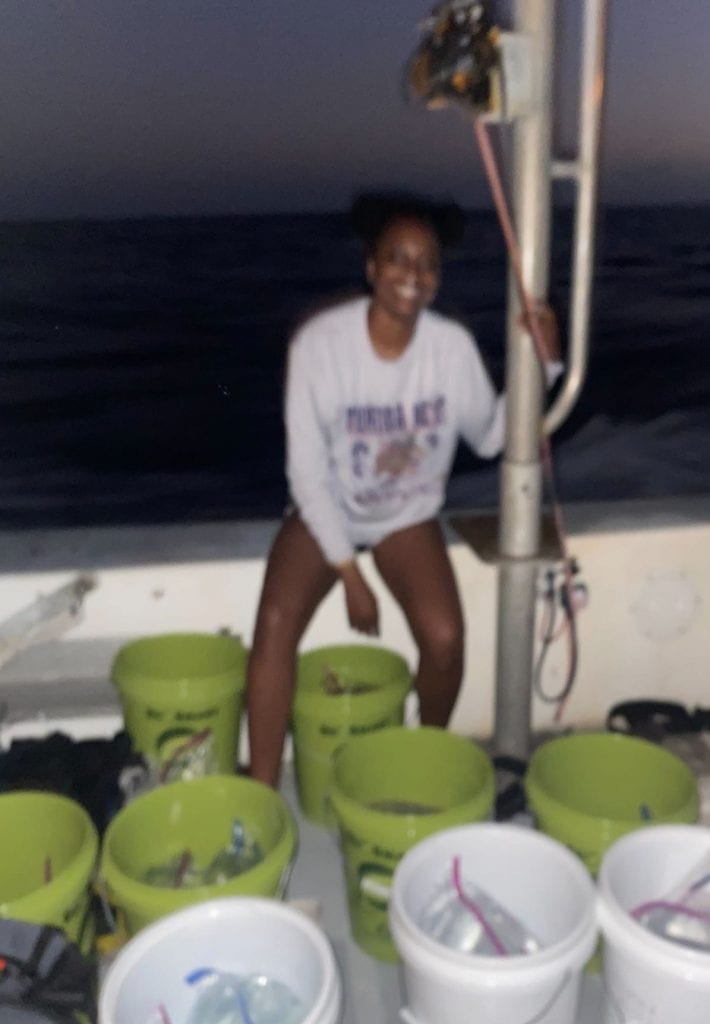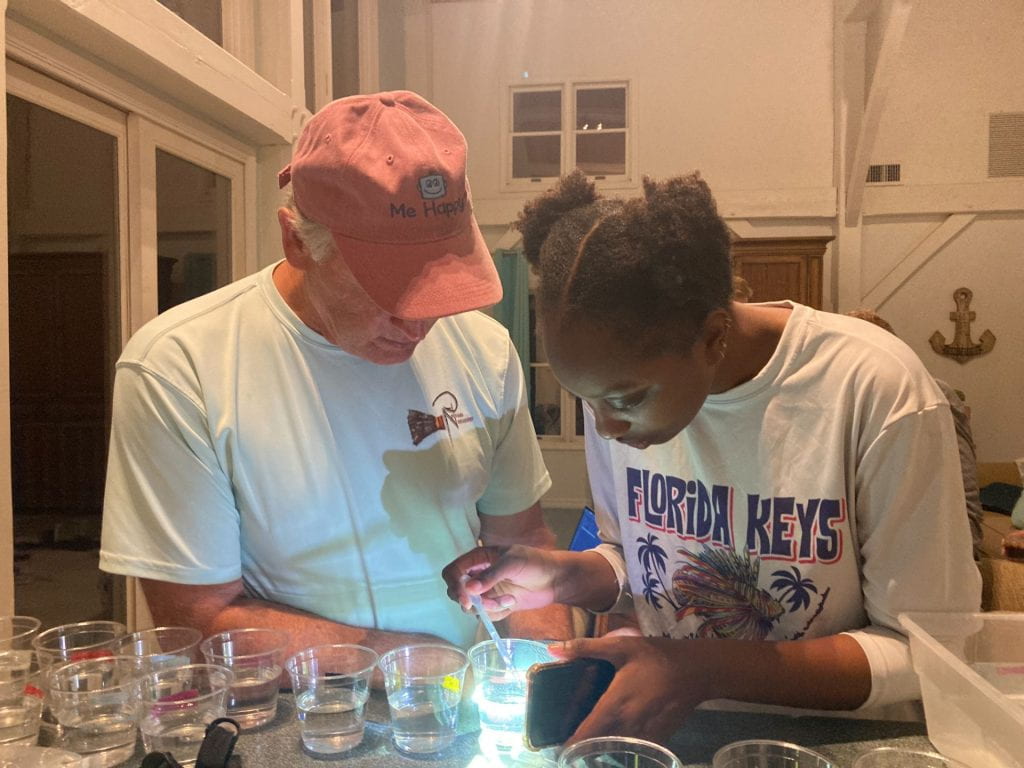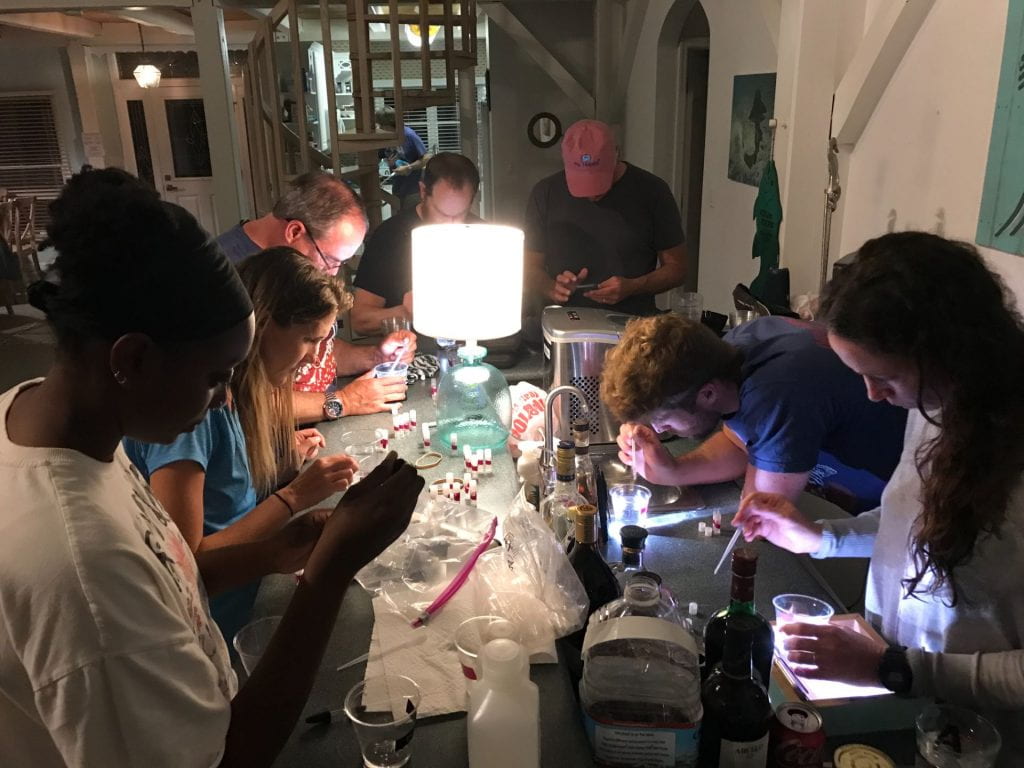One of the members on the Grouper Moon Team is Janelle Layton. She is a masters student in Fisheries Science at Oregon State University and works with Dr. Scott Heppell. Her research focus is concentrated on the impacts of climate change on Nassau grouper by understanding differences in both morphological traits and gene expression. This research will help to predict what might happen to the Nassau grouper due to increasing ocean temperatures as a result of climate change.
Janelle has set up 6 large bins/tanks with sea water in her lab on Little Cayman. She is keeping the different tanks at various temperatures to represent the rising ocean temperatures that scientists are predicting over the next 100 years. The first set of tanks is at 27 ° C, the second is 29° C, and the third is 31° C. She also has control tanks that are set at 25 ° C. The first set of tanks at 27° C represents the current water temperature that we have been recording at the aggregation site. This is already an increase of 2°C from what the researchers first recorded when they began the Grouper Moon Project 20 years ago.
After the first evening of spawning on Friday evening, the Grouper Moon Team collected Nassau grouper eggs from four spawning females for Janelle’s research. Friday night the team divided the eggs across four different temperatures. Then we filtered out the unfertilized eggs first using a large funnel and then using pipettes. Every morning and evening we removed dead larvae from the tanks and preserved the dead larvae in RNA Later. The RNA Later is a solution that helps to preserve the genes and protein that a genetic lab will analyze further. The lab will gather data on the heat shock proteins in the larvae.
Every evening, we also collected living larvae samples from the temperature bins to preserve in RNA Later and formalin. The formalin helps to preserve the structure of the larvae in their various stages of development. They analyzed the larvae for six days after the spawning.
Her hypothesis after examining the initial data is an increase in larvae mortality with increasing temperatures. At higher temperatures, the fish are using more energy to develop in high stress situations that they are possibly completely absorbing their yolk sac too quickly before they can form functional jaws. This causes the fish to be unable to feed themselves when they run out of their yolk sac. However, there is a lot of genetic variability so certain individuals could possibly be more resilient to the increasing ocean temperatures than others. This is what Janelle expects to see, but we will have to wait for the lab results and her data analysis to find out for certain.
What do you think will happen? Post your hypothesis in the comments section.





